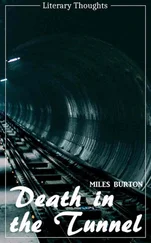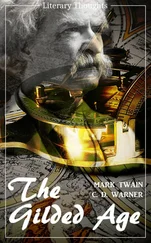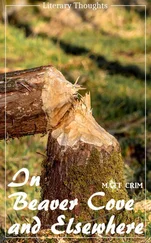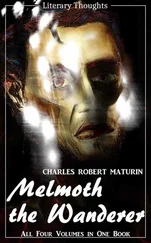“Pull your chestnuts out of the fire? Is that it, Tom? I reminded you myself before supper!” laughed Ned. “Well, I don’t mind, for you’ve done the same for me. I guess Mary Nestor knows you by this time, or, if she doesn’t, she never will. But what’s the big idea?”
“Oh, I’ve just got a notion in my head,” said Tom. “I want to go to the office a moment to jot down some memoranda before I forget them. ’Phone Mary I’ll be over as soon as I can. See you later.”
“Cheek!” exclaimed Ned, and with his merry whistle he hurried off in the darkness. “I only hope Mary speaks to you when you finally get to see her,” floated back to Tom.
“Don’t you worry about Mary,” advised the young inventor. “I’ll explain to her. And tell her I’ll be along in about half an hour. I really forgot all about the engagement.”
“I’ll say you did!” playfully mocked Ned.
Then, with his chum out of the way, Tom gave himself to trying to solve the mystery. For mystery he believed it to be. Seeing a man step behind a bush and, on arriving at the bush, to find nothing of the man there was surprising, to say the least.
Sensing that it would soon be so dark that it would be useless to investigate without an illuminant of some sort, Tom made haste to gain what advantage he could from the fast-fading light. He looked sharply about without moving from his place behind the bush on the other side of which he had seen the man disappear. Then, as he could pick up here no clew to the strange happening, the young inventor moved around to the other side.
The light was a little better here and Tom saw something that made him fairly gasp with astonishment. He had moved somewhat away from the bush and almost at his feet was an opening in the ground.
“This explains it!” murmured Tom, half aloud. “A hole in the ground! He went down there. I knew he couldn’t have dug himself in as quickly as that. But that hole! I never saw it before. It isn’t any of our doing. I’d have known about it if it were.”
All the land there belonged to Tom and his father. It was a big field surrounding the fenced-in plant, and often the smooth part of the field was used as a landing place for aeroplanes.
Cautiously approaching the opening in the ground and wondering more and more how it had gotten there without his knowledge, Tom saw that it had been closed by some planks placed over it. These were now tossed to one side, as if they had been hurriedly displaced. Scattered about was loose earth which had evidently covered the planks, thus hiding them from the view of a casual observer.
“A secret opening!” murmured Tom. “This is certainly the queerest thing I’ve ever seen! What does it mean?”
His surprise increased when, as he drew near to the edge of the opening, he saw a rough flight of plank steps going down into the hole. The young man caught his breath sharply, it was so astounding. But with Tom Swift to see and think was to act, and a moment later he began a descent of the steps into the mysterious hole. It might have been the part of discretion to wait until daylight, but a secret opening like this, so near the Swift plant, could mean but one thing, Tom reasoned.
“Some one is trying to put up a game on us,” he decided. “Unknown to us he has made a tunnel under our plant. There’s something funny here! I’m going to see what it is.”
Tom had fairly to feel his way down the flight of plank steps. They were rough and uneven, but solidly built. The young inventor counted them as he descended so he would know how to come back. Now that his head was below the level of the ground it was so dark that it was as if a velvet robe had been wrapped about him.
He counted ten steps down, and was cautiously feeling about with his right foot extended to ascertain if there were any more, when suddenly he felt the presence of some one near him. He caught the sound of breath fiercely drawn in, as if his unknown and unseen companion, there in the darkness, was nerving himself for an attack.
Instinctively Tom drew back, his hands pressed to the planked sides of the opening down which he had descended. He could feel, rather than see, some one leaning toward him. A sweet, sickening odor came to his nostrils. He felt a hand pressed over his face – a hand that held a damp rag which gave off that overpowering perfume.
“Here! What’s this? Who – who – – ” But Tom Swift’s voice became a mere gurgle in his throat. His legs became limp. His head whirled and he seemed lifted up and carried through measureless miles of space on the wings of some great bird.
Then Tom’s senses left him. He knew no more.
CHAPTER II – WAITING IN THE DARK
Just how long Tom Swift remained unconscious he himself did not know. It may have been several hours, for when he came to himself he felt a curious stiffness about his muscles as if he had lain for some time on the damp ground.
And he was on the ground – a fact he ascertained by feeling about with his hands, his fingers encountering damp, packed earth and the smooth surface of stones set in the soil.
“Where in the world am I, and what happened?” thought Tom, as soon as he could collect his senses enough to do any thinking. “Gee, but I sure do feel queer!”
There was a sickish taste in his mouth – a sense of sweetness, such as he remembered followed a slight operation he had undergone some years before when an anæsthetic had been given him.
“They doped me all right – that’s what they did,” mused Tom. “Ether, chloroform, or something like that. It knocked me out. But I’m beginning to feel all right again – no headache or anything like that. But what does it all mean, and where am I?”
Those were questions not easily answered.
While Tom Swift is trying to collect his senses and to remember, in their sequence, the events which led up to his queer predicament, may I take just a moment of your time, if you are a new reader, to tell you who Tom was?
The first book of this series, “Tom Swift and His Motor Cycle,” introduces you to the young inventor. His father, Barton Swift, was a widower, living in the old homestead at Shopton on Lake Carlopa. The Swift home was on the outskirts of the town and in a building not far from the house Barton Swift began work on a series of inventions which were destined to make him and his son famous. Tom’s mother was dead, but Mrs. Baggert, the housekeeper, looked well after the material welfare of Tom and his father.
In due time Tom began to follow in his father’s footsteps, working at small inventions until, when a sturdy youth, he became possessed of a motorcycle. He bought the machine of an eccentric individual named Wakefield Damon, who lived in the neighboring town of Waterfield. Mr. Damon set out to learn to ride his new machine.
“But bless my porous plaster!” the queer man would exclaim in telling the story, “I never thought the contraption was going to climb trees!”
Which it did, or tried to, because Mr. Damon did not know how to manage it. The result was that the rider was injured and the motorcycle badly smashed and Tom, near whose home the accident occurred, became the owner of the machine.
How he repaired it, added some improvements, and what he did with the machine are fully set forth in the book. It was the beginning of a long friendship with Mr. Damon, and also the real start of Tom’s inventive career.
Those of you who have followed him in his successes, from his motor boat to “Tom Swift’s Chest of Secrets,” – the volume immediately preceding this one – need not be told of Tom’s activities. He had made some wonderful pieces of apparatus and had had some startling adventures. In some of these his father and Mr. Damon had shared. So, also, had Ned Newton, Tom’s closest friend and now the treasurer of the Swift Construction Company.
Читать дальше












